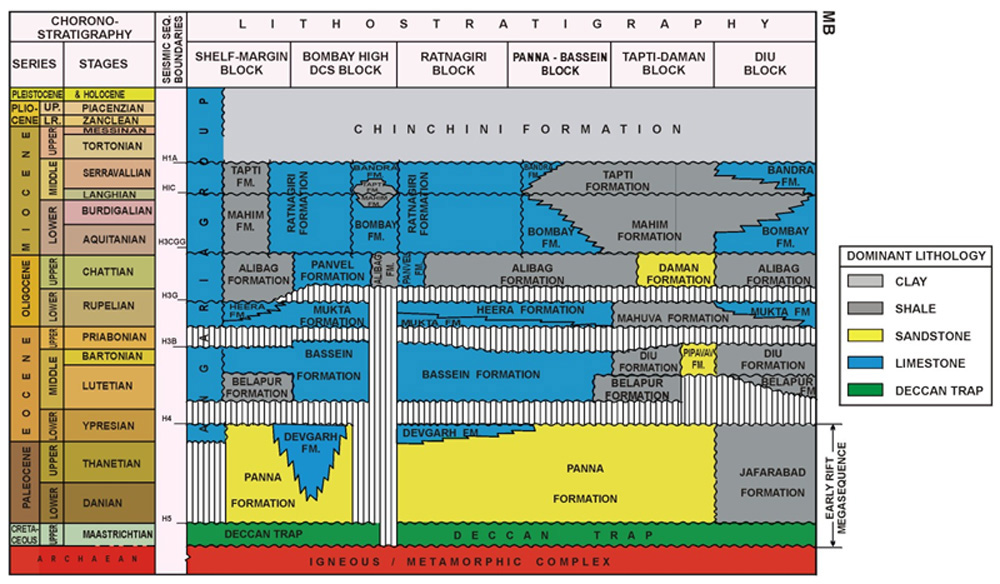Panna Fm
Type Locality and Naming
Well Bassein – 1, (depth interval 2070 – 2145 m). [Original Publication: Chugh, M.L., et al., 1987. Paleogene clastic sediments in the Bombay Offshore Basin and their hydrocarbon prospects: An unpublished ONGC report.]. Reference well: Well B – 65 – 1 (depth interval 2189 -2850 m); 661 m thickness in well B-65-1
[Figure: Lithostratigraphy in Mumbai Offshore blocks (from NDRDGH.gov.in; after Jitendra Misra, 2009)]
Lithology and Thickness
Sandy claystone. Represented by conglomerate and sandstones at the basal part, overlain by a section of coal-shale alternation in the middle and succeeded by shale section at the top. The coal is lignite. The shale is laminated, carbonaceous and pyritiferous. There are 5 layers of coal and thin beds of open marine limestone in the Panna Formation.
In the type section, the formation is 75 m thick. In the reference section the formation is 661m thick.
Relationships and Distribution
Lower contact
Non-conformably underlain by the Deccan Traps Fm or Crystalline basement.
Upper contact
Conformable and gradational with the overlying Bassein Fm in most part. Unconformable in the basin margin.
Regional extent
GeoJSON
Fossils
Top of the Panna Fm coincides with top of the Nummulites burdigalensis-Assilina spinosa assemblage. Palynology played a major role in dating the strata of Panna Formation. Mehrotra et al. (2002) recognized three dinoflagellate bioevents in the Thanetian and 12 in the Ypresian (within duration of 7.3 My).
Age
Depositional setting
Fluctuation (cycles) conditions varying form fluvial, lagoonal to shallow inner shelf prevailed.
Additional Information
Chakravorti et al. (MS) have identified altogether 12 prominent lithological episodes, out of them 8 are fining-up cycles, 2 major coarsening-up cycles and 2 moderate cycles. The cycles appear to be comparable with 9 to 1 sequences recognized in the Ypresian of Europe (Hardenbol et al., 1998).
